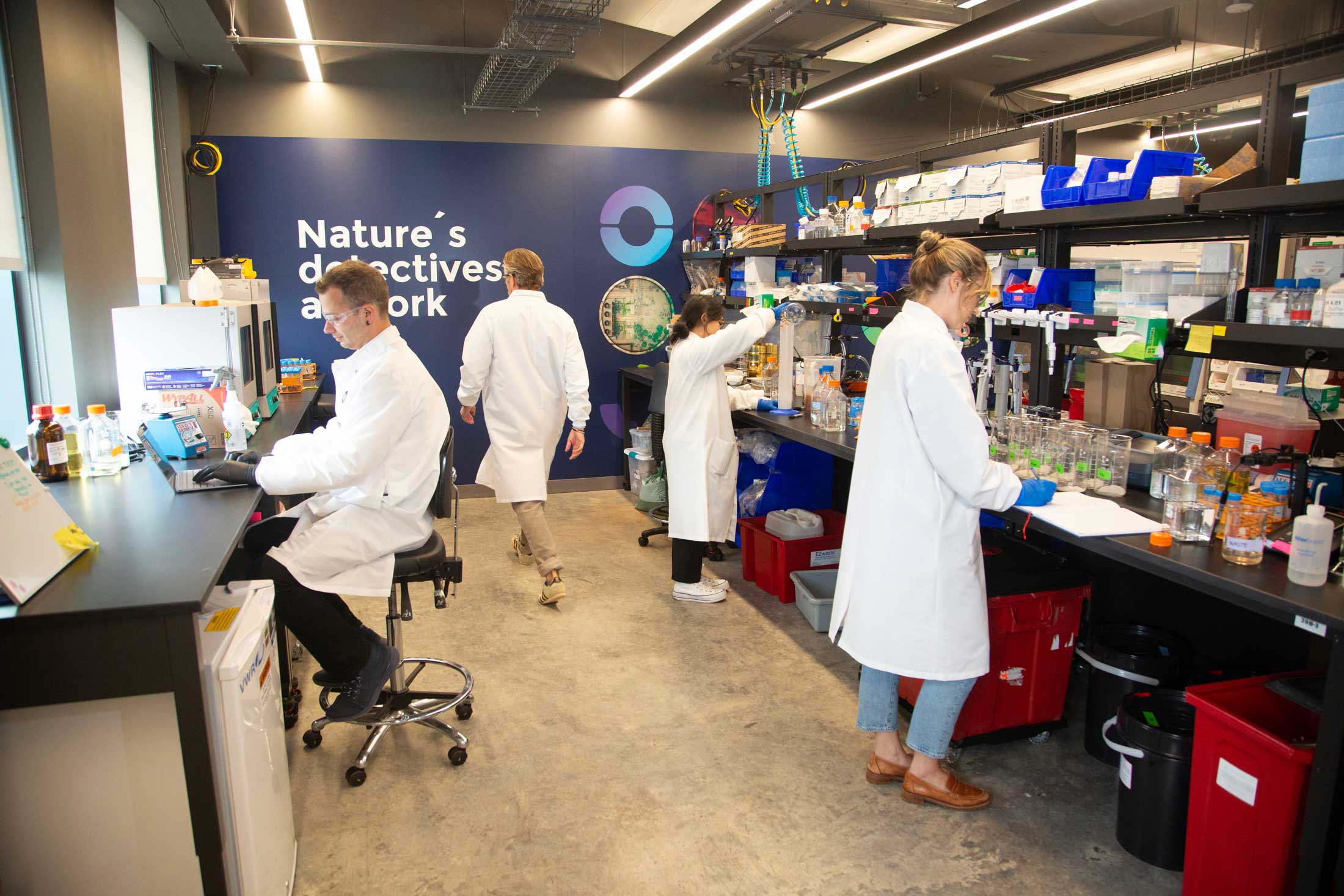Ai Digital Biology
DNA Goes Full Throttle: The Smallest Engine You've Never Seen
DNA takes center stage in innovation as researchers introduce a nucleotide-fueled nanomotor, showcasing the immense potential of machinery constructed from life’s most fundamental materials
Oct 21, 2023
Image Created Using DALL-E 3
An international team of scientists has unveiled a revolutionary nano engine constructed from DNA. This miniature marvel, driven by an ingenious mechanism, can perform pulsating movements, offering a glimpse into the future of complex nanomachinery. Their findings were published in Nature Nanotechnology.
Petr Šulc, an assistant professor at Arizona State University's School of Molecular Sciences and the Biodesign Center for Molecular Design and Biomimetics, collaborated with Professor Michael Famulok from the Life and Medical Sciences (LIMES) Institute at the University of Bonn, Germany, and Professor Walter from the University of Michigan.
Šulc leveraged his group's cutting-edge computer modeling tools to unravel the intricacies of this leaf-spring nano engine, comprising nearly 14,000 nucleotides, the fundamental building blocks of DNA.
“Being able to simulate motion in such a large nanostructure would be impossible without oxDNA, the computer model that our group uses for design and design of DNA nanostructures,” explained Šulc. “It is the first time that a chemically powered DNA nanotechnology motor has been successfully engineered. We are very excited that our research methods could help with studying it, and are looking forward to building even more complex nanodevices in the future.”
This nanomotor, while a million times smaller, is structurally analogous to a hand grip strength trainer, comprising two handles interconnected by a spring within a V-shaped framework. In this larger lookalike, the handles are squeezed together against spring resistance before being pushed back to their original position by the spring once released. “Our motor uses a very similar principle,” explained Famulok. “But the handles are not pressed together but rather pulled together.”
The researchers have repurposed a mechanism essential for all life on Earth—the cellular library. Each cell houses the blueprints for the range of proteins it requires, and when a protein is needed, the cell orders a copy from the relevant blueprint, facilitated by enzymes called RNA polymerases.
The RNA polymerases are what fuel the pulsating movements of the DNA motor. “We took an RNA polymerase and attached it to one of the handles in our nanomachine,” explained Famulok. “In close proximity, we also strained a DNA strand between the two handles. The polymerase grabs onto this strand to copy it. It pulls itself along the strand, and the non-transcribed section becomes increasingly smaller. This pulls the second handle bit by bit towards the first one, compressing the spring at the same time.”
The DNA strand between the handles harbors a specific sequence of letters just before its end – the termination sequence. This sequence signals the polymerase to release its grip on the DNA, allowing the spring to relax and push the handles apart. This brings the start sequence of the strand close to the polymerase, and the transcription process can begin once again. “In this way, our nanomotor performs a pulsing action,” Mathias Centola from Professor Famulok's research group explained.
As with any other motor, this action requires energy, but where does it come from? The "alphabet soup" of nucleotides – the letters necessary for transcription – is the key. Each nucleotide has a small tail of three phosphate groups – a triphosphate. To attach an additional nucleotide to an existing chain, two of the phosphate groups must be removed, releasing energy that can be used to link nucleotides together. “Our motor thus uses nucleotide triphosphates as fuel,” said Famulok. “It can only continue to run when a sufficient number of them are available.”
The researchers have already demonstrated the motor's compatibility with other structures, paving the way for its potential to traverse surfaces akin to an inchworm. “We are also planning to produce a type of clutch that will allow us only to utilize the power of the motor at certain times and otherwise leave it to idle,” explains Famulok. In the long term, the motor could become the heart of a complex nanomachine. “However, there is still a lot of work to be done before we reach this stage.”
Šulc's laboratory embraces an interdisciplinary approach, employing statistical physics and computational modeling to address challenges in chemistry, biology, and nanotechnology. Their work centers on developing multiscale models that shed light on biomolecular interactions, especially in the context of DNA and RNA nanostructures and devices.
In the words of Professor Tijana Rajh, the director of the School of Molecular Sciences, “Petr Šulc and his group are doing extremely innovative molecular science, using the methods of computational chemistry and physics to study DNA and RNA molecules in the context of biology as well as nanotechnology. Our younger faculty members in the School of Molecular Sciences have an extraordinary record of achievement, and Professor Šulc is an exemplar in this regard.”
DNA and RNA, molecules indispensable for life's fundamental functions, offer unique opportunities in the realm of nanotechnology. As Šulc explained, “It is a little bit like playing with Lego blocks except that each Lego block is only a few nanometers (a millionth of a millimeter) in size, and instead of putting each block into the place where it should go, you put them inside a box and shake it randomly until only the desired structure comes out.”
The journey of this transformative field continues to unfold, yielding increasingly advanced designs and nanoscale operations for applications in diagnostics, therapeutics, molecular robotics, and building new materials. In the quest to unlock the hidden power of the nanoscale, this DNA-powered nano engine marks a milestone, reflecting the boundless potential of molecular innovation.


















